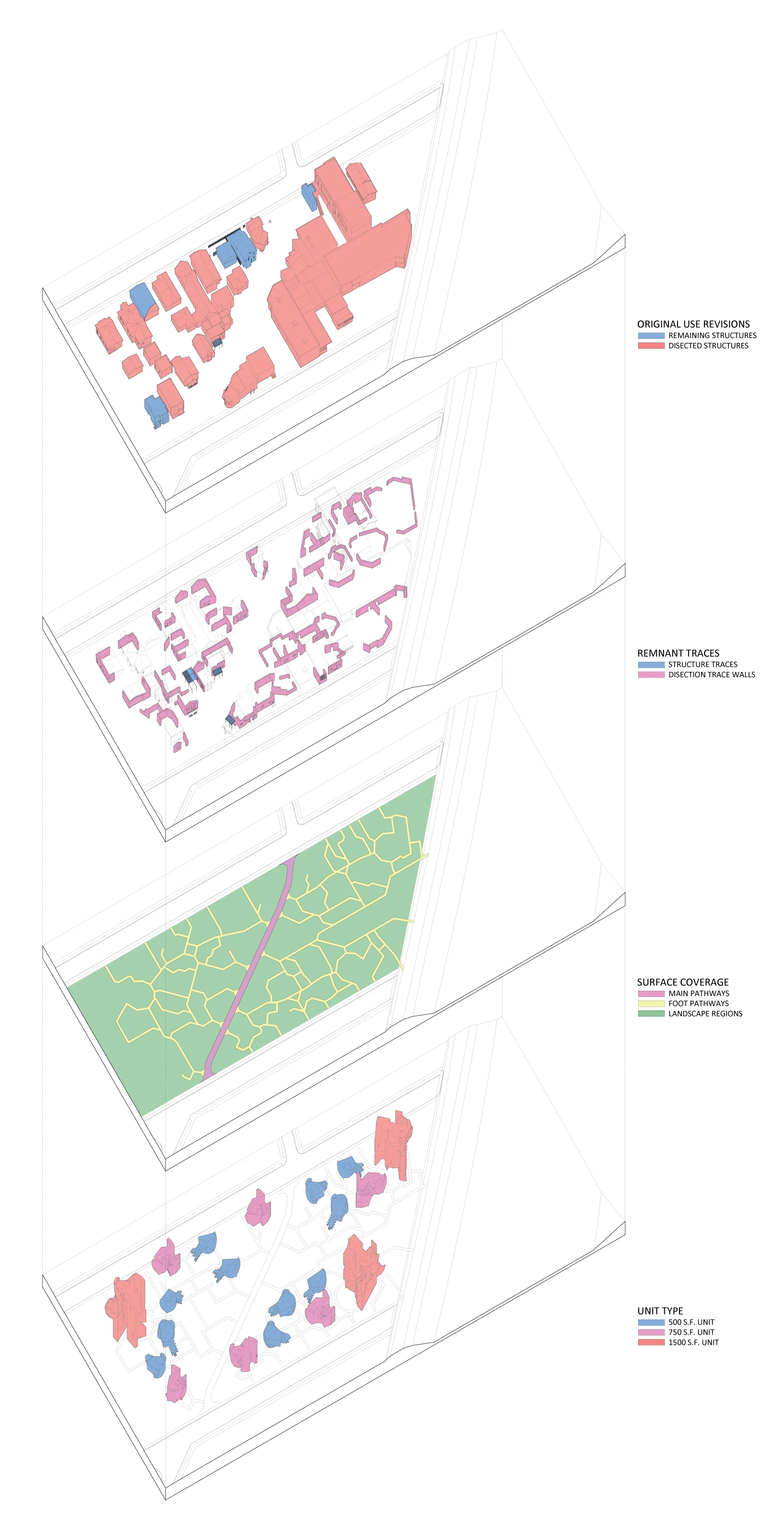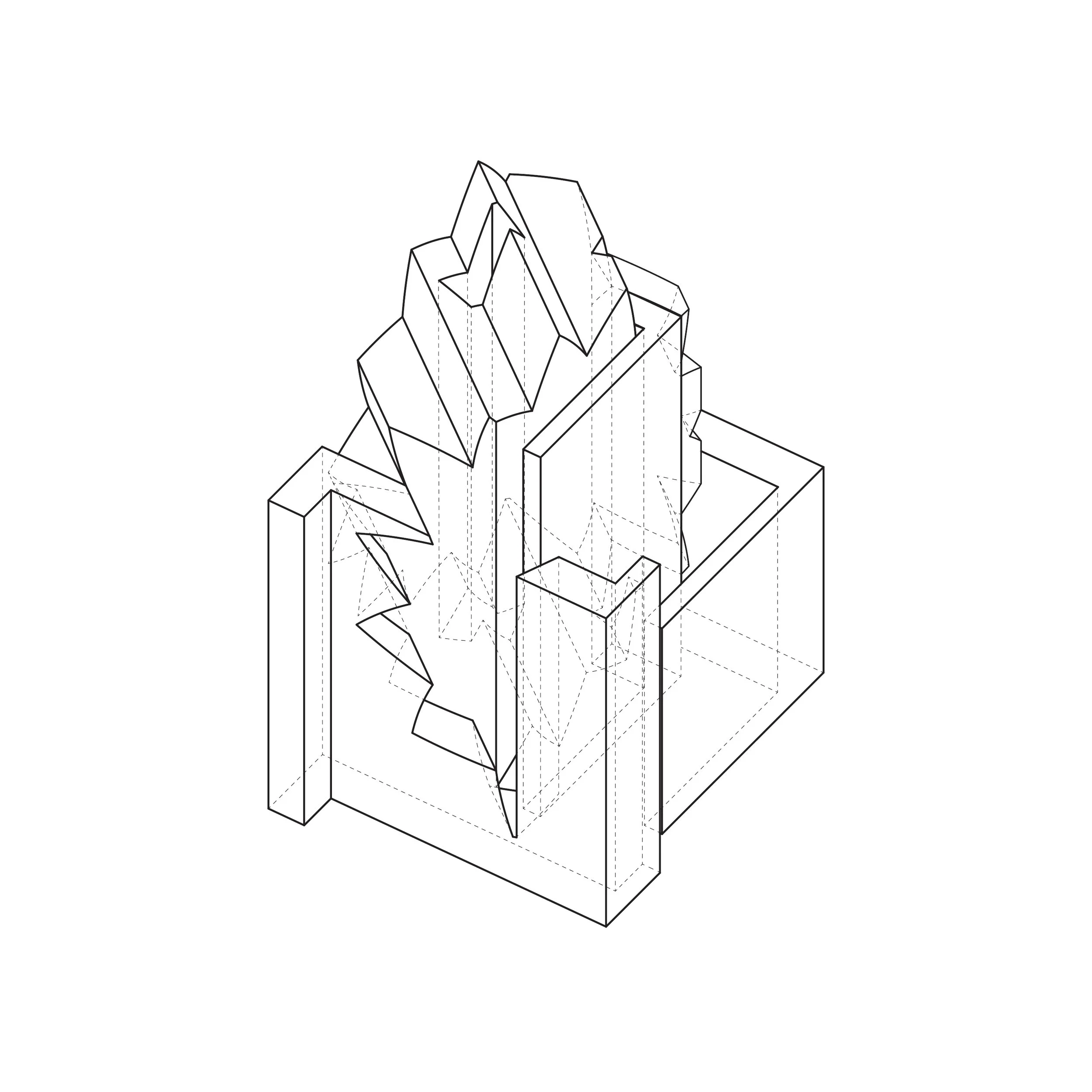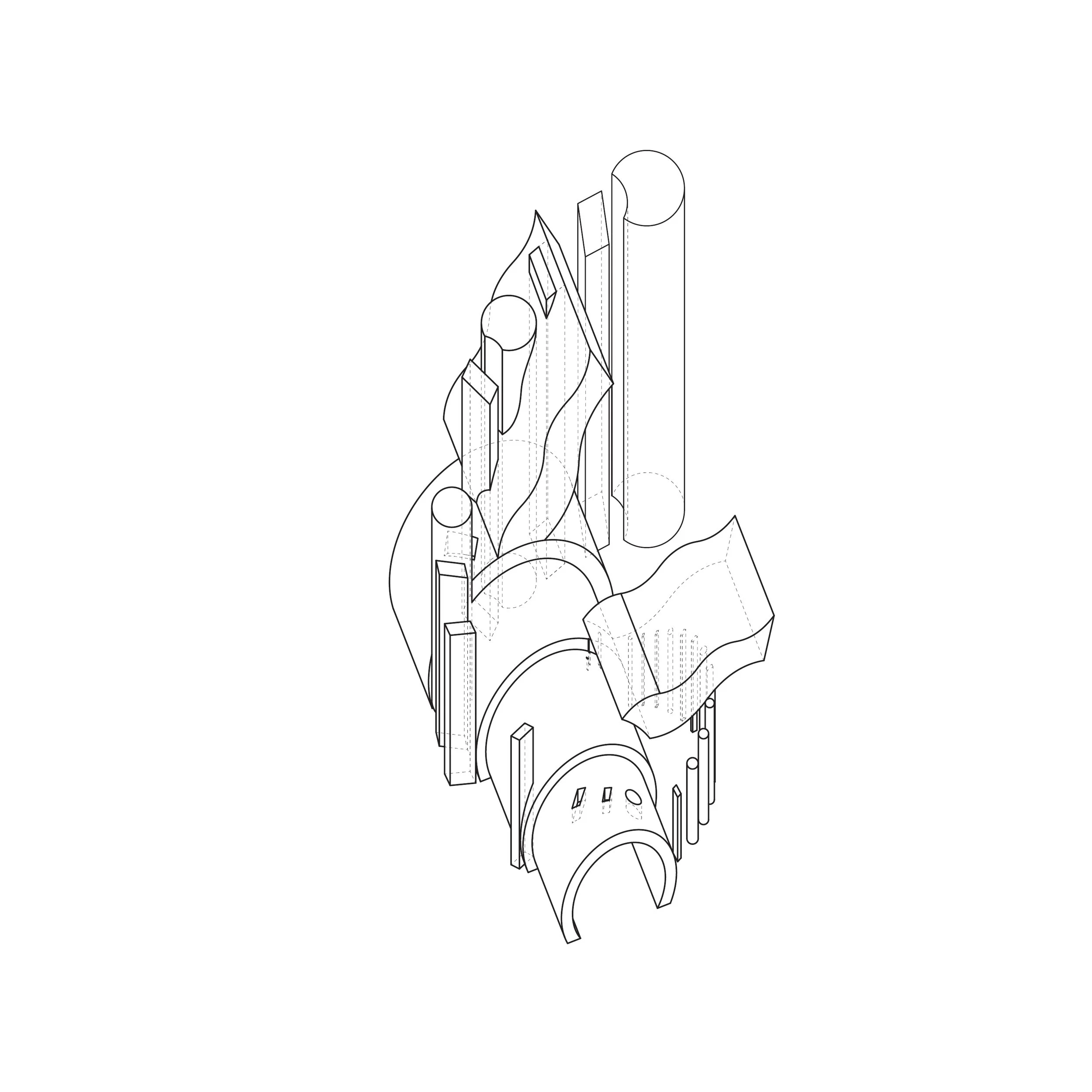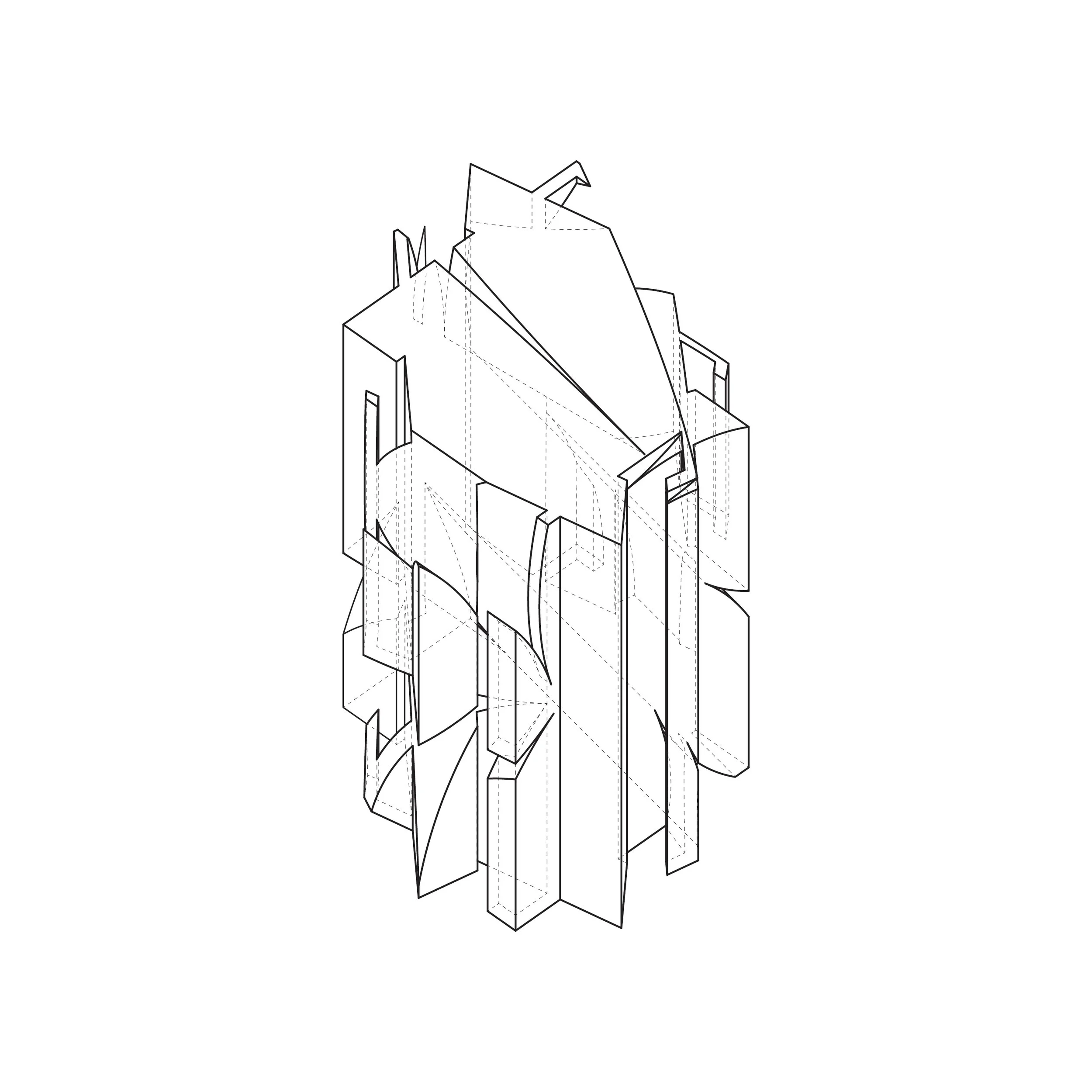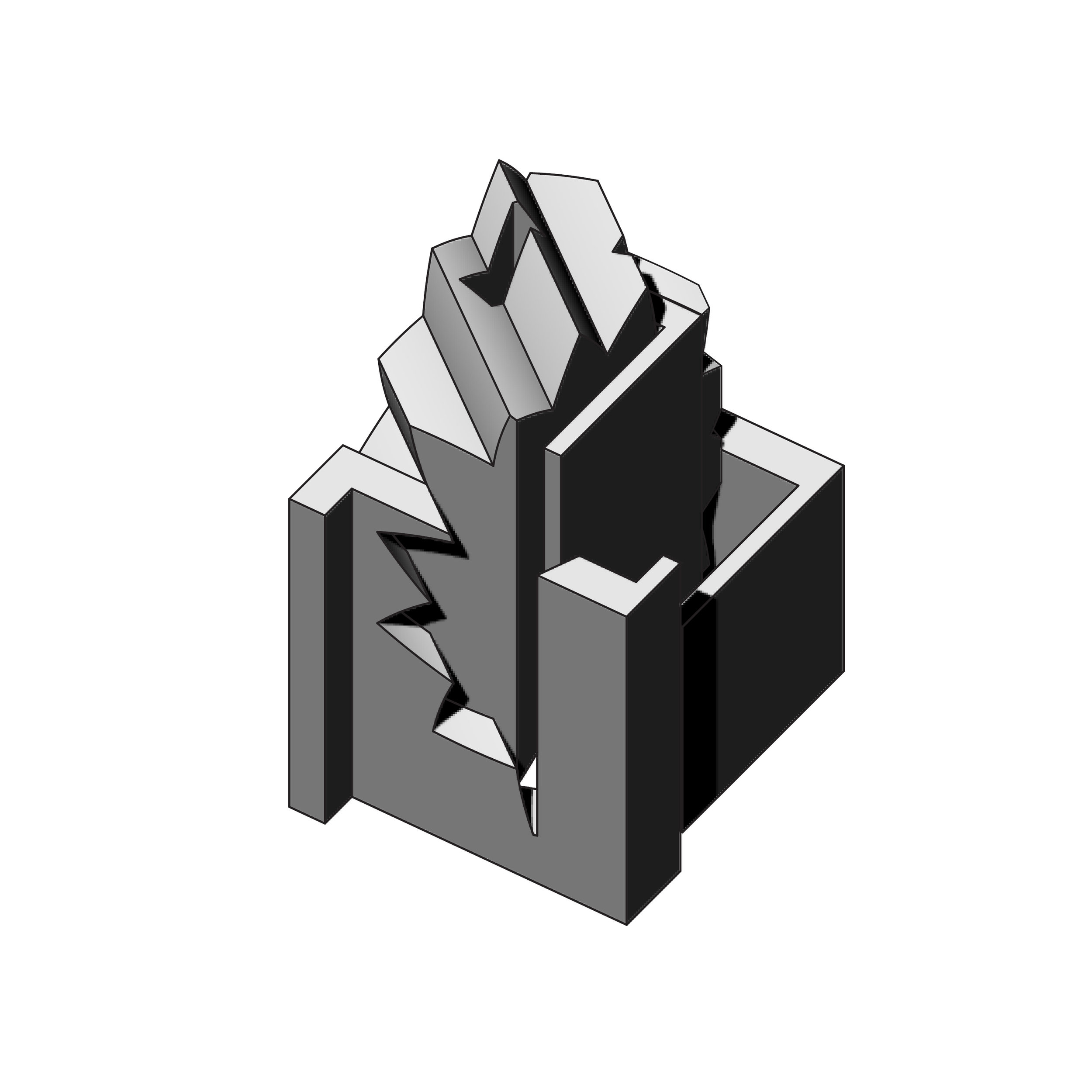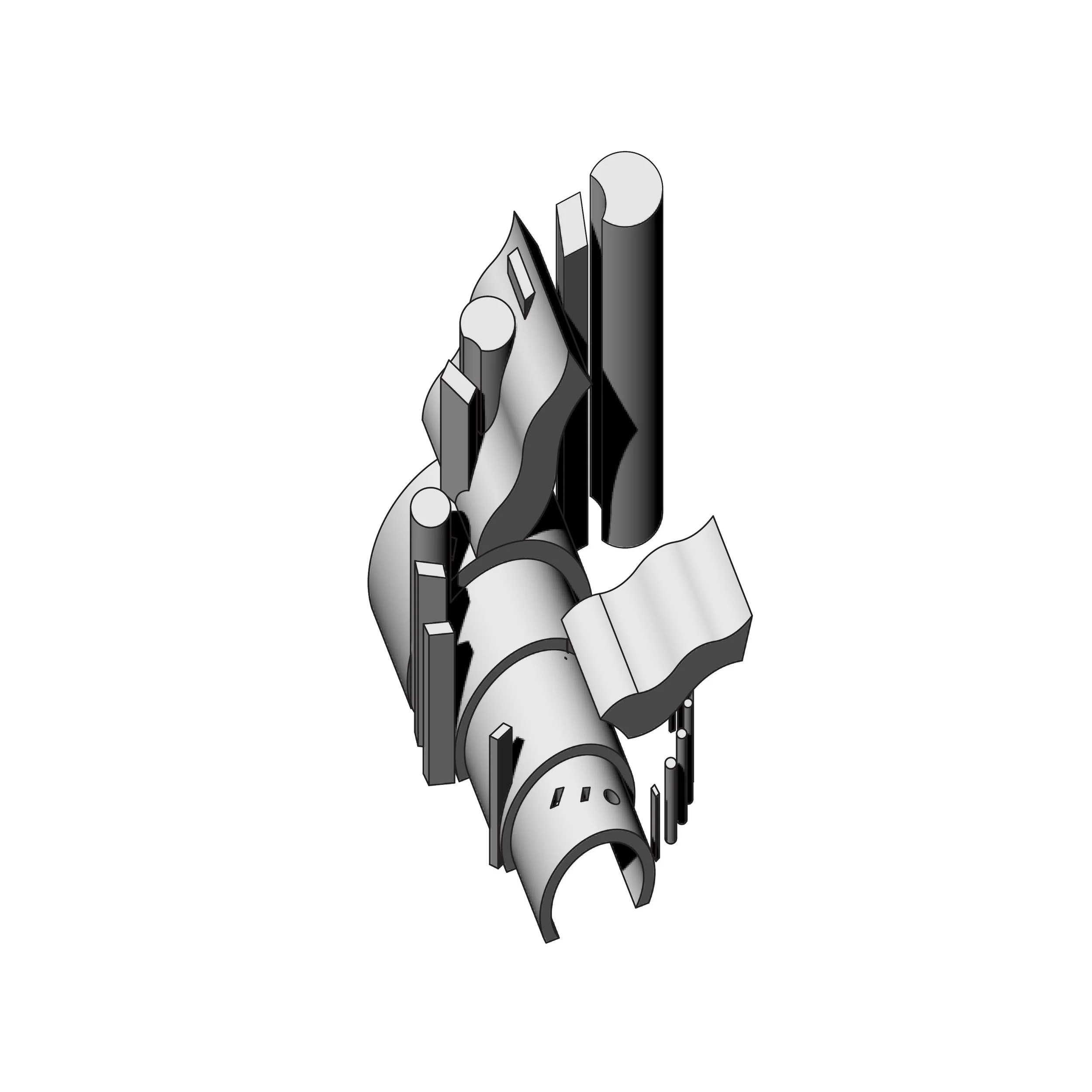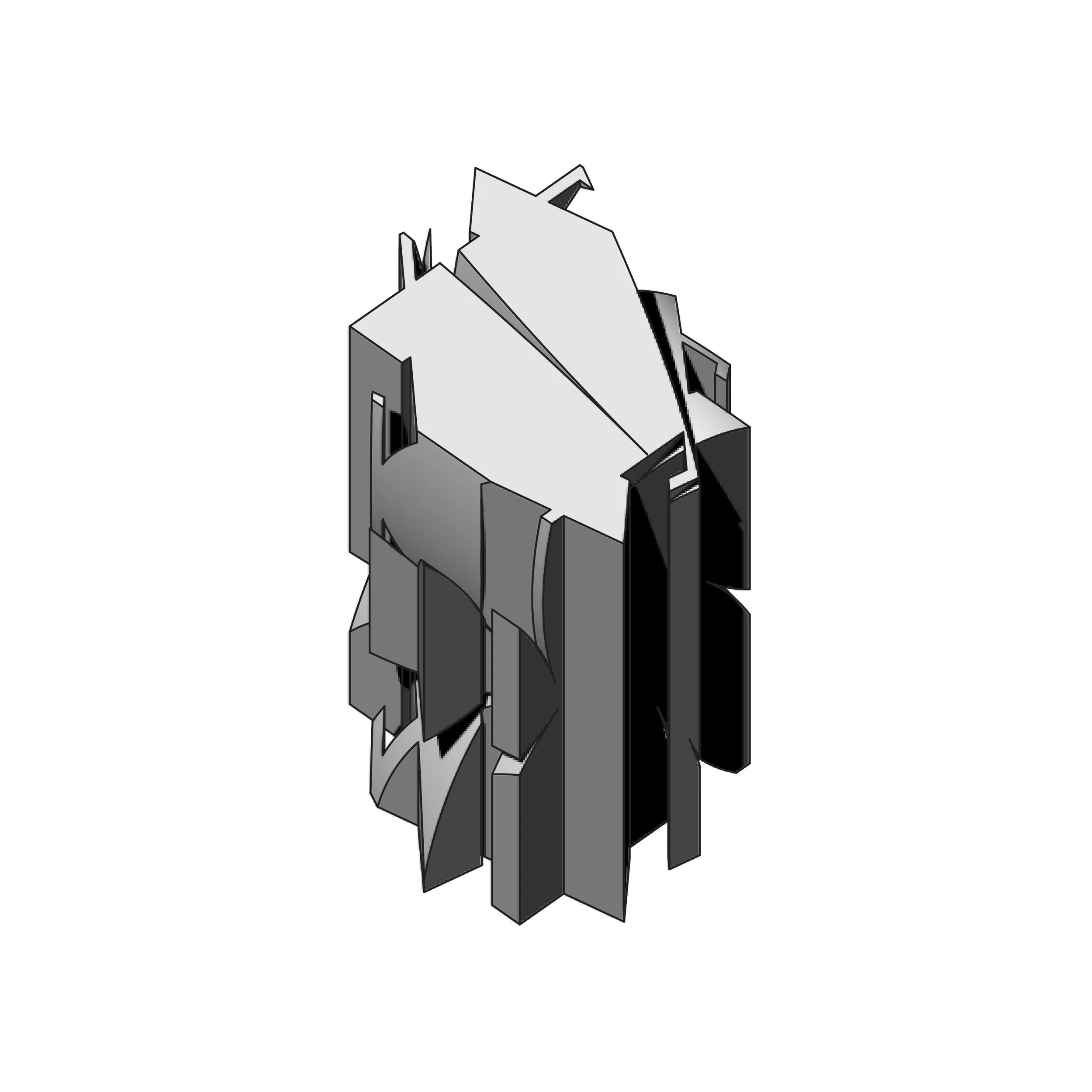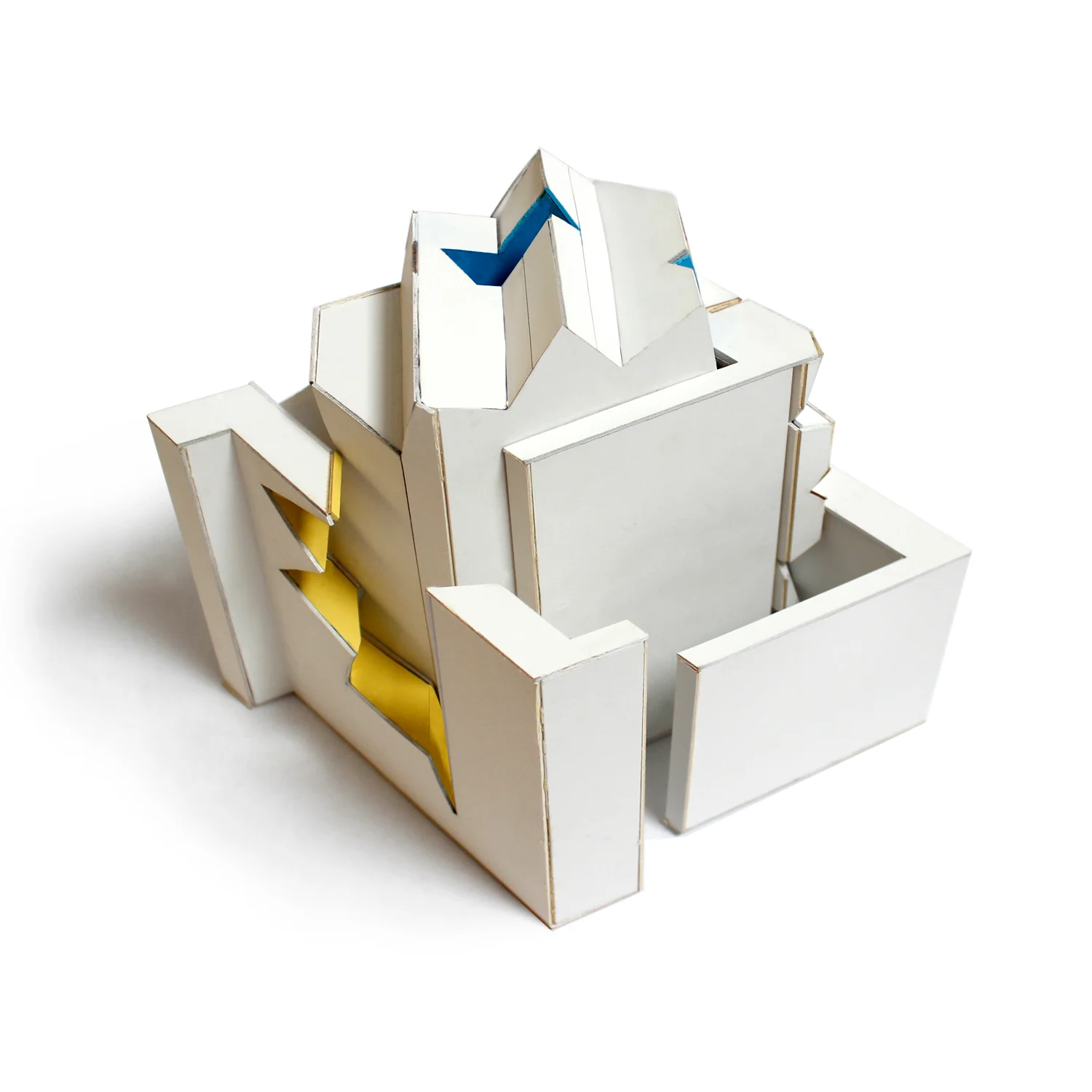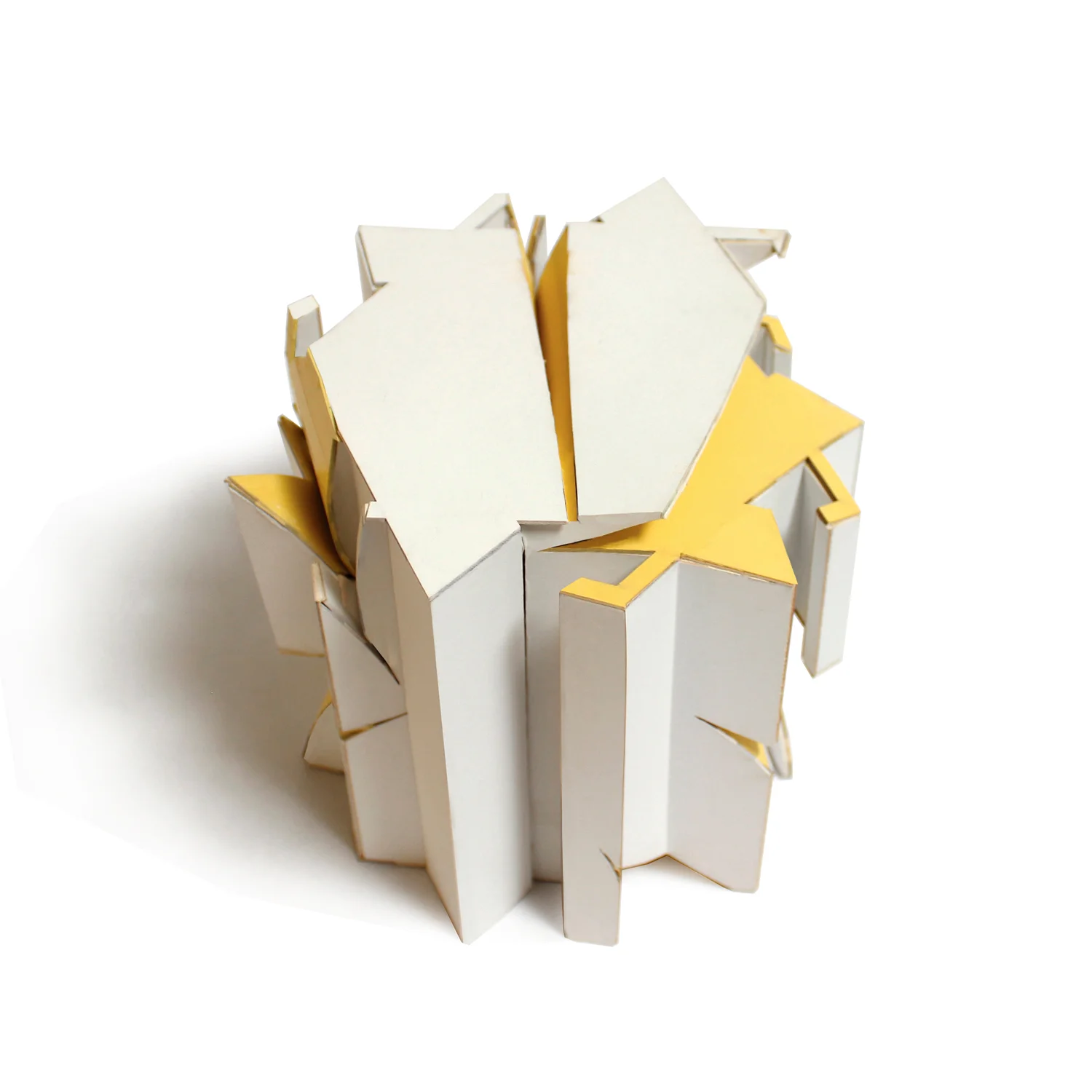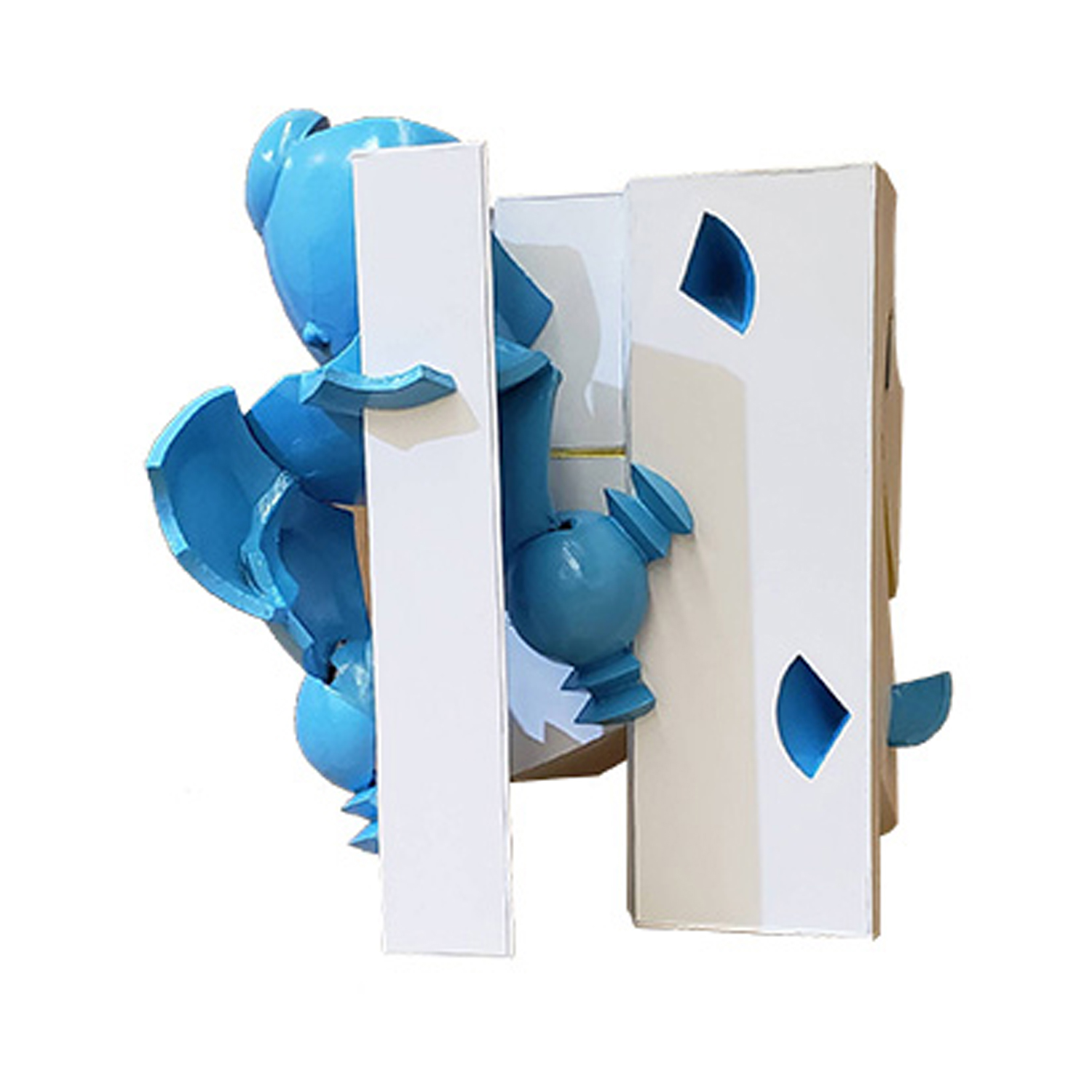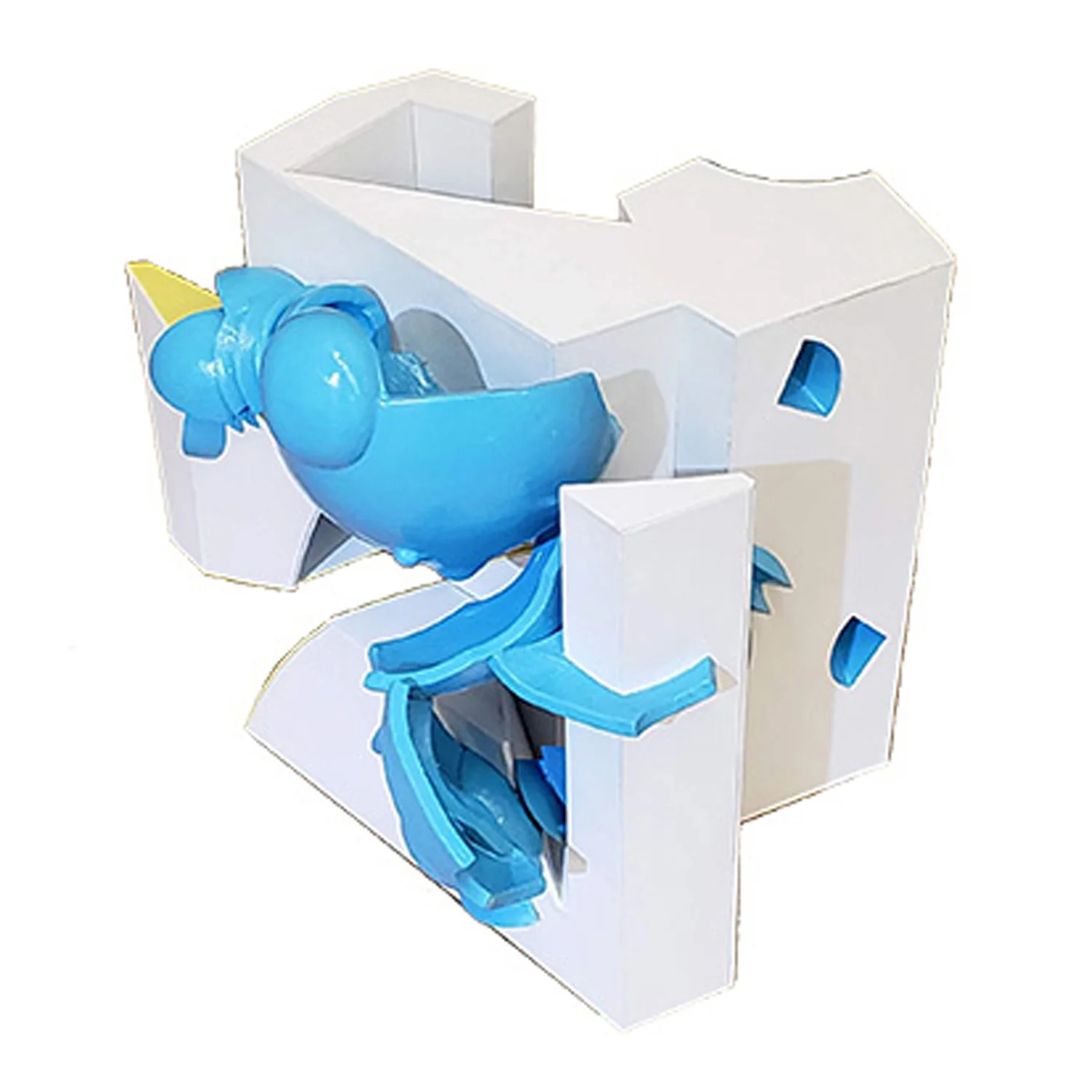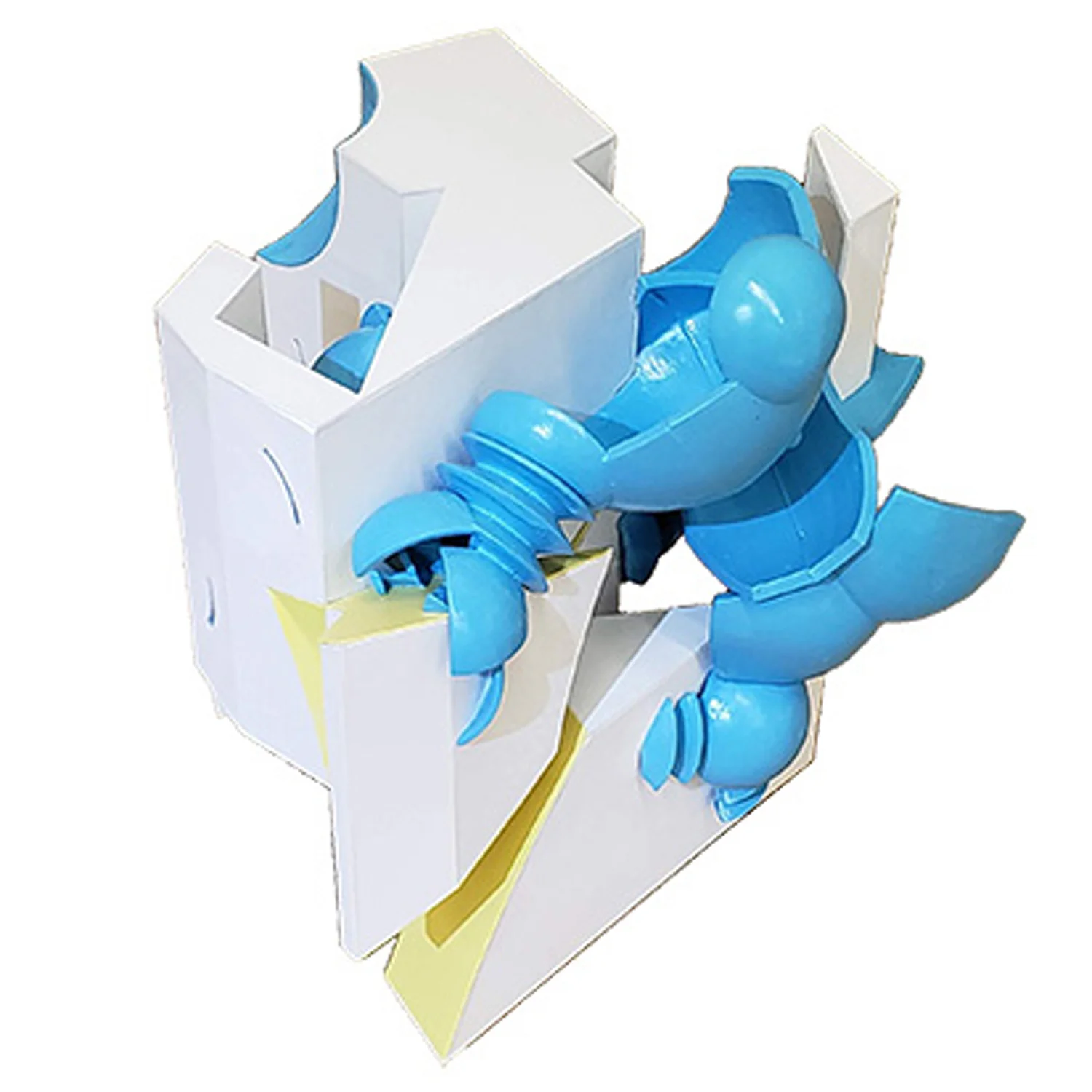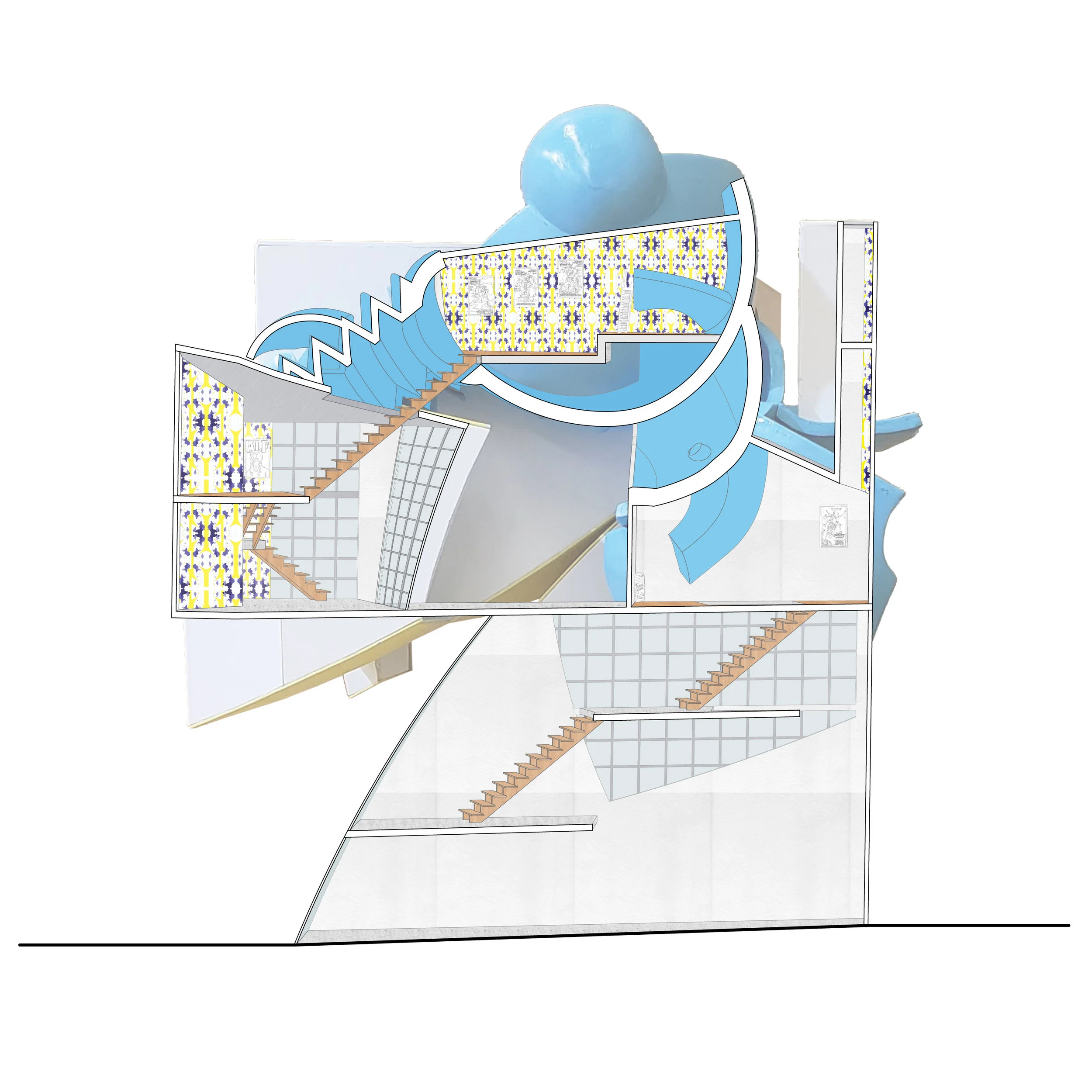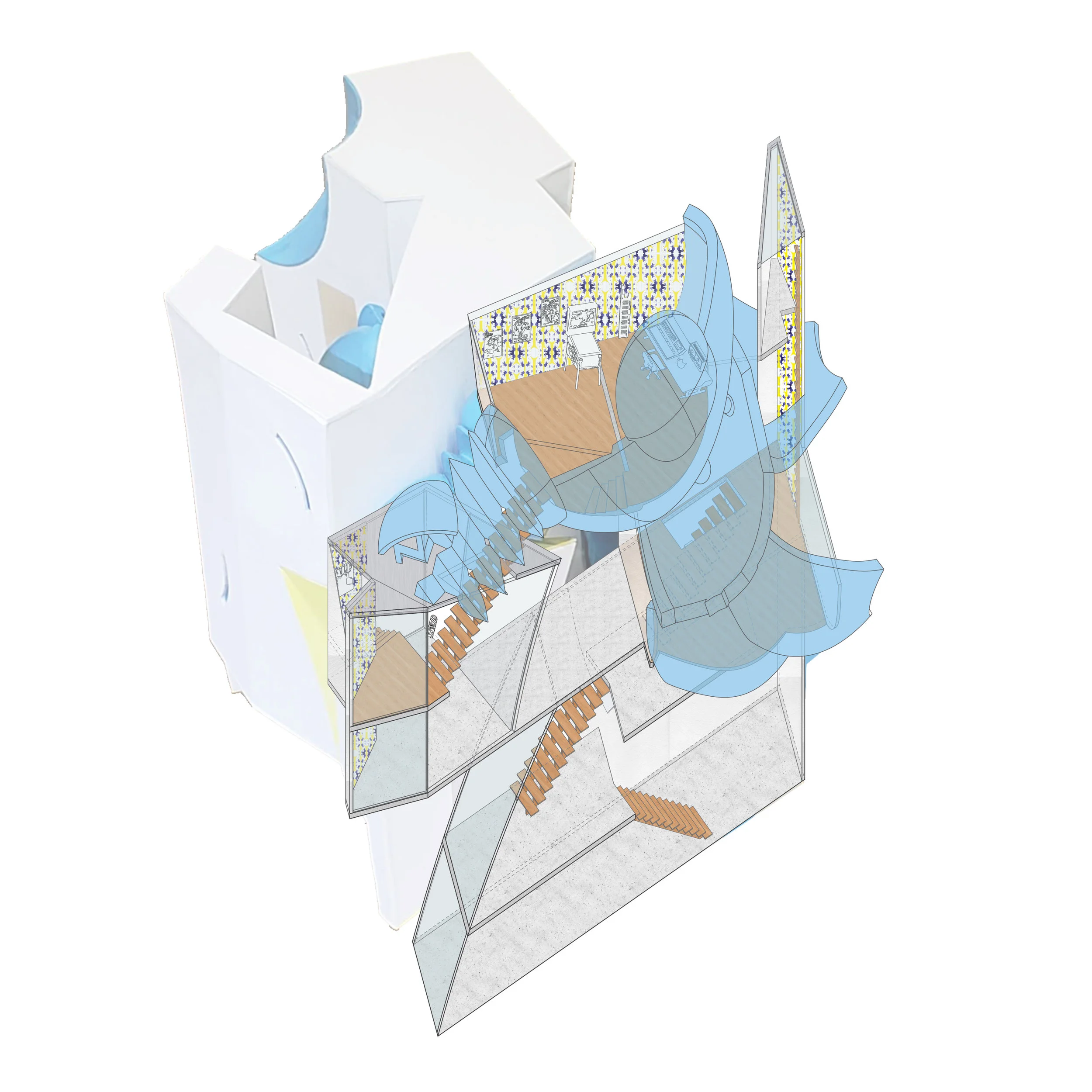frogtown ruins
ARCH 383 - studio 3a | fall 2018
INSTRUCTOR - berenika boberska | woodbury university
A semester long exploration of field interaction as it relates to formal study and community development. Frogtown Ruins was the final product of a combination of parasitic and deconstructive architectural typologies, and their application against a preexisting residential landscape. The focus of the project was parasitic deconstruction of an existing site, while still paying homage to the current urban conditions.
site section
Unit orientation was governed through exploitation of naturally occurring lighting and views of the newly revised central communal open spaces as well as the adjacent riverbed. The various height living modules were systematically aggregated about the site to maximize views of all units while maintaining a flowing skyline in elevation view. As a result, numerous unique shaded alcoves were created in relationship to each separate living module.
elevations
floor plans
The floor plans accentuate the numerous unique semi-private community lounge locations derived from the interaction between the new residential units and the remnants of the original site structures, found in the form of partitions. The numerous circulation pathways serve as a means to become lost in the relaxing niches of the site design.
site diagrams & axonometric
Treating each living modules as a parasite, the existing site conditions were deconstructed into remnant walls that would serve as pseudo-divisions between each unit. By retaining reliefs of the existing urban constructs in the form of site walls, a semi-private shared community was derived. The maze-like remnant walls would serve to divide the shared site conditions into implied private space, while also allowing free flowing interaction between all residents.
Abstract formal exploration
figural formal exploration
hybrid compositions
The largest site unit was derived through numerous field interactions between abstract and figural forms, in which the figural field acted as a parasite feeding off its host abstract field. This final larger form was then deconstructed into fragments of the total composition to derive smaller living modules. These modules where aggregated amongst the existing housing conditions, serving as the parasites which deconstruct the existing urban site conditions.











